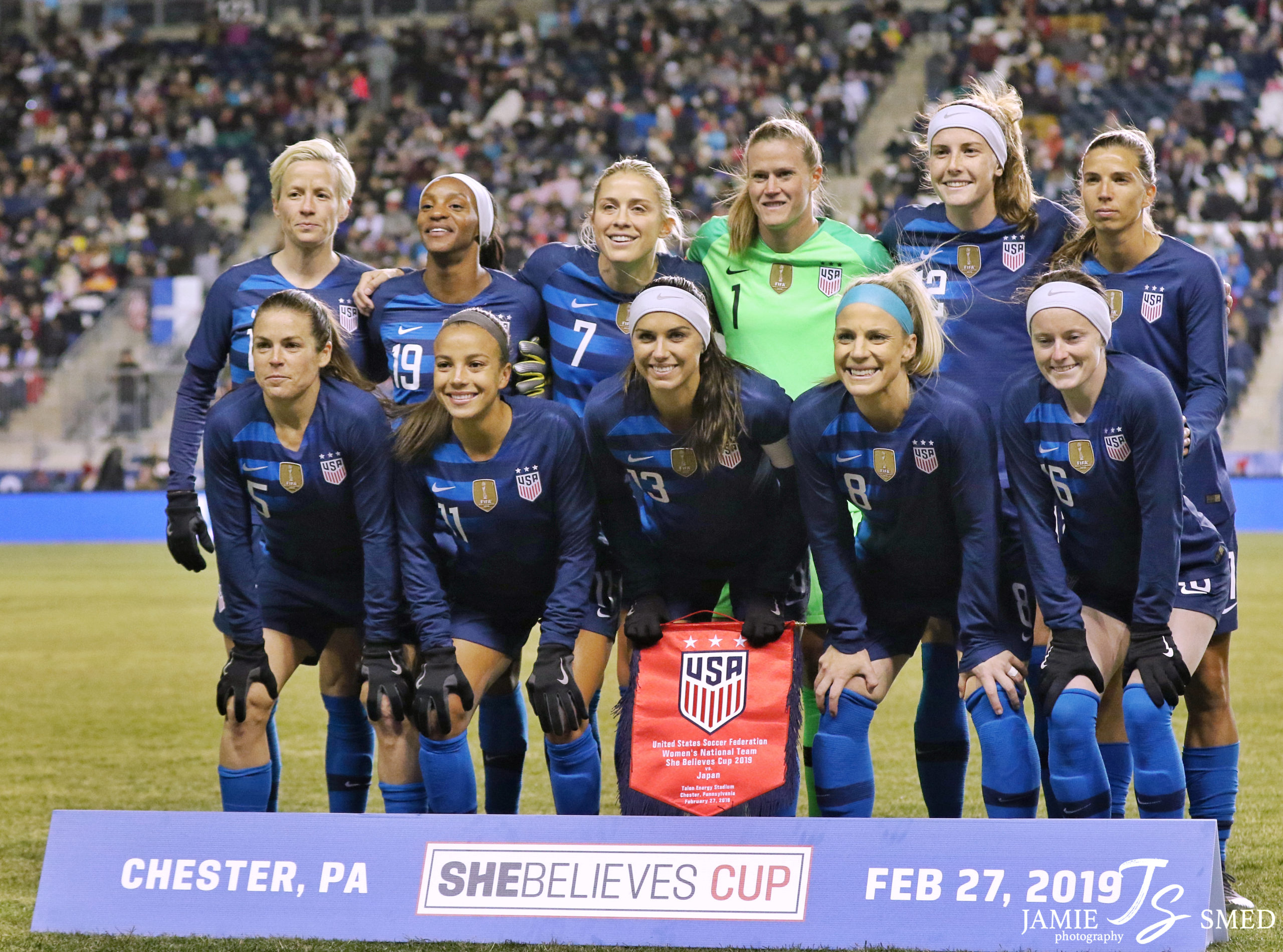Abortion rights, women of color, and LGBTQIA+ people are under attack. Pledge to join us in fighting for gender justice.
“Equal Play, Equal Pay!”—NWLC Files Amicus Brief in Support of the U.S. Women’s National Soccer Team

On July 30, 2021, the National Women’s Law Center, the Women’s Sports Foundation, 63 other organizations committed to advancing gender justice, and our pro bono partners at Selendy & Gay PLLC filed an amicus brief in the Ninth Circuit to support professional soccer players on the United States Women’s National Team (USWNT) who are fighting for equal pay. The USWNT players appealed to the Ninth Circuit after a federal district court judge dismissed their equal pay claims under the Equal Pay Act (EPA) and Title VII of the Civil Rights Act of 1964 (Title VII), and the parties settled their other claims. The players are represented by the law firms of Mayer Brown LLP and Winston & Strawn LLP.
Under the EPA, the U.S. Soccer Federation is not allowed to pay men and women differently for equal work, which is work that requires the same skill, effort, and responsibility. However, for decades, the U.S. Soccer Federation has paid USWNT players at substantially lower rates than their male counterparts on the U.S. men’s soccer team.
Both teams play twenty non-tournament games in a season, where male players are paid $13,166 on average for winning a game, whereas female players are only paid $4,950 on average for a win. Compensation for World Cup participation is more drastic. In 2014, the men’s team received a $5.375 million bonus for losing early in the tournament, whereas the women’s team only received a $1.725 million bonus for winning the 2015 World Cup—the most watched soccer game in American history.
In this amicus brief, we highlighted the district court’s legal errors when it dismissed the USWNT’s EPA claim and their sex discrimination claim under Title VII, and explained the broader context of sex discrimination when it comes to pay. The U.S. Soccer Federation argues that it did not pay USWNT players less than their male counterparts when looking at the players’ total compensation and the district court agreed. However, the EPA requires an equal rate of pay, not merely the same total compensation. The women’s team played and won more games and that’s why they were altogether paid slightly more. When looking at the rates of pay for appearance fees and bonuses, as required by the EPA, the women received substantially lower rates than the men and this is against the law.
The district court also improperly relied on the negotiated collective bargaining agreement as a defense to the equal pay claim, but the U.S. Soccer Federation never offered the USWNT the same deal as the men’s team. In fact, if the USWNT had been offered the men’s agreement, the USWNT players would have made tens of millions of dollars more in compensation. Federal regulations and case law clearly provide that a collective bargaining agreement is not a defense to an equal pay claim. Federal law recognizes that women face sex discrimination in salary negotiations and employers cannot escape liability by merely pointing to a collective bargaining agreement.
Despite the USWNT’s unparalleled success, these elite players, like so many women in varying industries and occupations throughout our country, have been paid substantially less for the same work. Women across the United States still experience a wage gap in nearly every occupation, with even larger wage gaps for Black women, Latinas, Native women, and some groups of Asian American women, leading to a loss of hundreds of thousands of dollars over the course of a lifetime. Sex, race, discrimination and bias, occupational segregation, lack of workplace supports for caregiving and other responsibilities that tend to fall on women are the driving forces behind the wage gap and persist, including in high-level sports.
At NWLC, we are working to advance equal pay and close existing gender and racial wage gaps through federal and state legislative efforts and litigation. We are in solidarity with the USWNT players who are fighting for equal pay, and we urge the Ninth Circuit to reverse the district court’s ruling and allow the team’s equal pay and sex discrimination claims to proceed.





